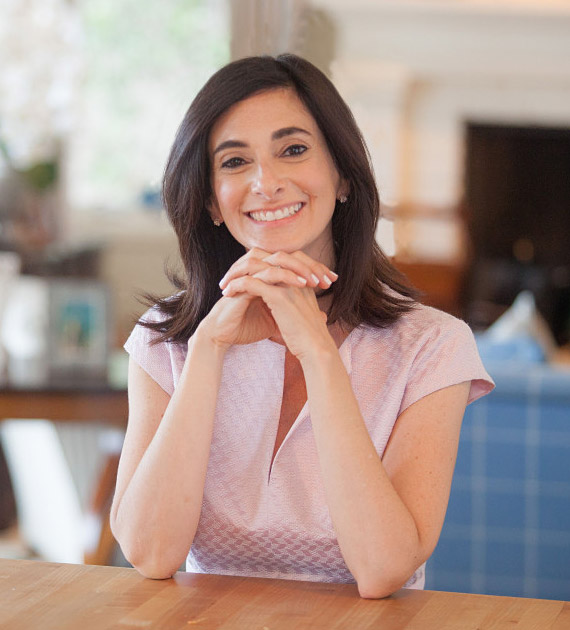How to Make a Balanced Breakfast Smoothie for Your Kids
Download Recipe: Balanced Breakfast Smoothie Recipe
In today’s video, you will learn how to make a balanced breakfast smoothie for your kids.
Hi, I’m Shani Mara Breiter, Dietician for families, kids and teens. Welcome to Yummy TV. The place to be to create a healthy lifestyle that you and your family will love. I have helped hundreds of families just like yours, and I can help you too. Subscribe to my channel and go to my website at ShaniMara.com to get great tips that you won’t find anywhere else.
So, the problem with most smoothies today, that I see, whether they’re store-bought or made at home is that there’s so many carbohydrates so your just … Your kids are getting a sugar rush in the morning. That I’m not a proponent of. The carbohydrates come in the form of a whole bunch of fruits or sugary yogurt or added honey and Agave. And lastly, juice. So my suggestion is that your carbohydrate comes from just some fruit, but not tons of it. And not multiple kinds of carbohydrates.
So, the key though to making it really nutritious is to make sure that you add in the protein and the fat. And that’s what I find is often missing in the smoothie. Maybe there’s a little bit of milk, but that’s not an adequate amount to actually, hold your child over or your teen over, until their morning snack at school. So the benefit of having the protein, is it helps to steady the blood sugar, keeping them more satisfied, longer. And the same thing with the fat. It actually helps them to stay satisfied. So, I really recommend that you work on this balance. And, there is one other bonus food that I would add into the smoothie, if you can get away with it. Which is, pre-washed baby spinach. Because even though it will change the color of the smoothie, it will not change the flavor, guaranteed. I have tried this with so many kids, and there’s never a problem. They may not like the color, but there is no difference in the actual taste of the smoothie.
The reason why I like a balanced breakfast smoothie for your kids, is because some kids are just not big breakfast eaters. But if you make them a really good nutritious smoothie, they’ll eat it and you won’t get any pushback. So, let’s talk about how to actually do that. The key is to take a balanced plate, like a balanced meal, and actually make that into a balanced smoothie. So first, take a look at this diagram, which shows you a balanced plate. And if you notice, there are four categories. There is the protein, right? There is the carbohydrate, which is either the grain or the fruit. And for our purposes for the smoothie, we’re going to use fruit. And then, you have healthy fat. So, the key is, is to balance it in the smoothie.
So, let’s break that down a little bit further. For the protein, you have a few options. You have some plain yogurt that you can use. Or you can use a really nice quality organic grass-fed whey protein. Or you can use vegan protein powder if your kids would prefer that. So that’s the first category. The second category is the fruits, and the typical fruits to use that are really good are bananas and berries. And I recommend that you can buy them even, frozen. And if you can’t get frozen bananas then go ahead and once they become super ripe, peel them, cut them in half and freeze them. And you’ll get a really nice consistency in your smoothie. So if you combine that with your kids favorite berries or mixed berries, you’re good to go.
And the third category are healthy fats. So those are things like, you can put some flax oil, you can use some avocado. And another thing that I love, another food that I love, are fresh nuts, raw nuts. Such as cashews, or almonds or something like that. There’s one other item that I’m a huge fan of, which is coconut butter. So if your kids like the flavor of coconut, or even if you’re not sure that they do. Go ahead and try it and see what they think. I have included a recipe with details down below.
So now here’s how you actually put the smoothie together, here’s the recipe. And remember, check below because I actually, give you the details of the quantities of each ingredient. So, you’re going to start with some nuts and put them in the blender. And then you’re going to add some water, and you’re going to blend that up until it becomes a pulp. So, I want you to blend and blend and blend more. I want it so that it’s really pureed in there, before you add any of the other ingredients. Because one sure way to have your kids not eat it, is if there are little pieces of nuts in there. So blend away and spend extra time blending. Then, when you’re done with that, when you have that pulp, is when you add all the other ingredients. Mainly your protein source, whether it’s the protein powder or the yogurt. So those are the two things that I would recommend. And then, you add in the fruit and the healthy fat. And that’s when you do your second blending.
So blend, blend, blend. Once that’s blended, what I would do is, I’d actually taste it to see how does it taste? At that time, you can also add in the spinach. So once that’s all blended, then you add in the ice. The ice will bring up the volume of it, and it will give it that consistency that your kids will really like. Blend that really well and then, you’re good to go.
I have a little trick with one particular product, that if you don’t want to add in tons of fruit and sugar and juice. There’s this great sugar substitute that is all-natural that has no weird aftertaste. And the brand is called “Lakanto”. It’s spelled L-A-K-A-N-T-O, and it’s a Monkfruit sweetener. So you can buy this online at Amazon and simply just, add in a couple of spoonfuls and there’s zero grams of sugar in it and it’s going to make it a little bit sweeter, and your kids will love it.


 What to do? Focus your conversation on healthy eating habits, rather than body and weight. Talk less and do more. In other words, provide healthy snacks and meals at home, model healthy behaviors around nourishing your body and set an example by being physically active. Sit down to enjoy healthy family dinners together. When your children are young, little conversation is needed. Instead, simply take action in rebalancing meals and provide healthy foods at home. With an older child who is overweight, wait for your teen to bring it up to you and support them by asking them how you can help. Overall, focus on lifestyle shifts and eating patterns, rather than weight. Make healthy eating a family affair.
What to do? Focus your conversation on healthy eating habits, rather than body and weight. Talk less and do more. In other words, provide healthy snacks and meals at home, model healthy behaviors around nourishing your body and set an example by being physically active. Sit down to enjoy healthy family dinners together. When your children are young, little conversation is needed. Instead, simply take action in rebalancing meals and provide healthy foods at home. With an older child who is overweight, wait for your teen to bring it up to you and support them by asking them how you can help. Overall, focus on lifestyle shifts and eating patterns, rather than weight. Make healthy eating a family affair.